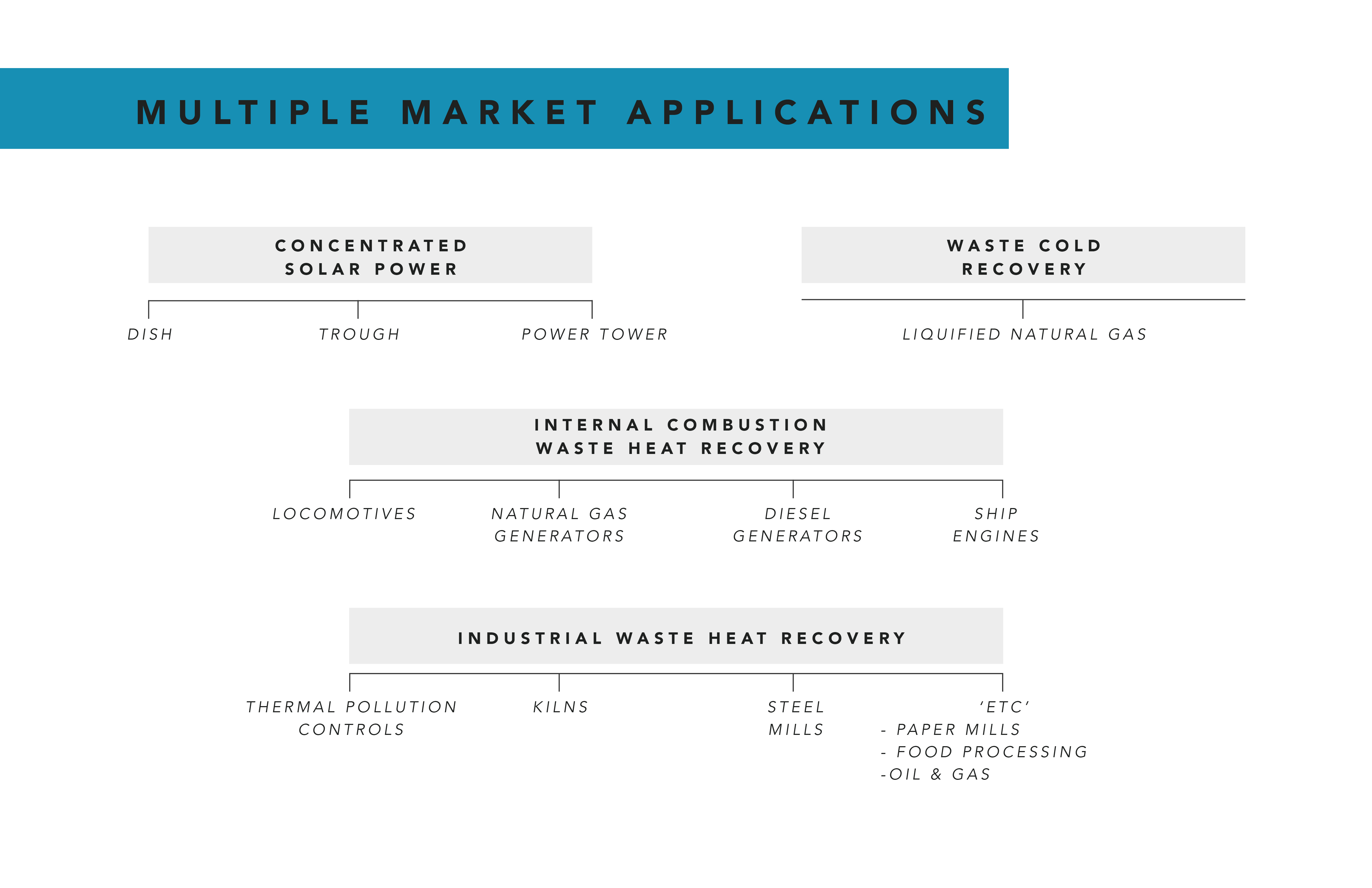Anywhere there is an industrial process that involves transforming raw materials into useful products – steel mills, paper plants, refineries, chemical plants, oil and gas pipelines, pollution control equipment, and general manufacturing — heat is often wasted. If not recovered and used, waste heat is released to the atmosphere, missing an energy efficiency opportunity. Waste Heat Recovery is the process of collecting waste heat and using it to fill a desired purpose elsewhere. It is Cool Energy’s novel technology that captures and converts this largely untapped waste heat to generate electricity. The incorporation of our technology allows the industrial user to put their waste heat to use, generating clean electricity rather than venting to the atmosphere. Installing the ThermoHeart® Engine(s) on waste heat streams from industrial and power generation processes can have payback times as short as one year in the best applications.
According to the United States Department of Energy, up to 50 percent of the energy from all fuels burned in by U.S. industry ends up in the atmosphere as waste heat. Researchers at the US Department of Energy report that harnessing all waste heat recovery opportunities in US industry could produce over 14 GW of electricity. Cool Energy engineers have calculated that up to 11GW of power generating capacity could be installed in the US alone if the best quality small-scale waste heat from commercial and industrial operations were collected and converted to electricity.
Pollution Control
Pollution control equipment is used to destroy particulates and volatile organic compounds (VOC’s) that are produced by industrial processes. The gas that is emitted from the combustion chamber of this equipment has a temperature that ranges from 300°C to 600°C. This clean, hot gas is passed through a heat exchanger, raising the temperature of a heat transfer fluid, which then circulates into Cool Energy’s ThermoHeart® Engine. The heat delivered to the engine creates mechanical work, causing a mechanism attached to an alternator to rotate, which produces electricity from the Stirling cycle machine. This electricity reduces the customer’s electricity bill and operating costs. For plants operating on a 24/7 schedule in Europe or Japan, the payback times can be as short as two years. Pollution control machines of this type are used across many different processes, including food processing, baking, brewing, metal finishing, paint spraying, soil remediation, and petroleum processing.

